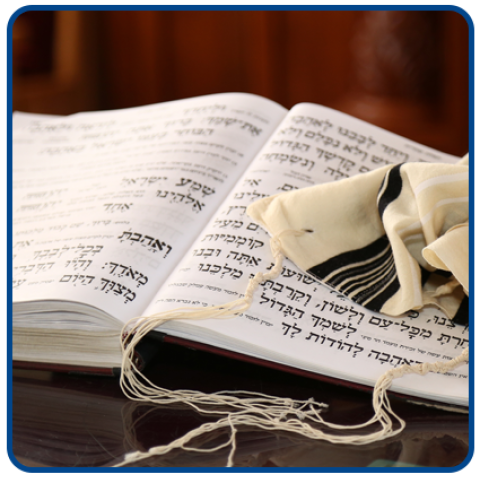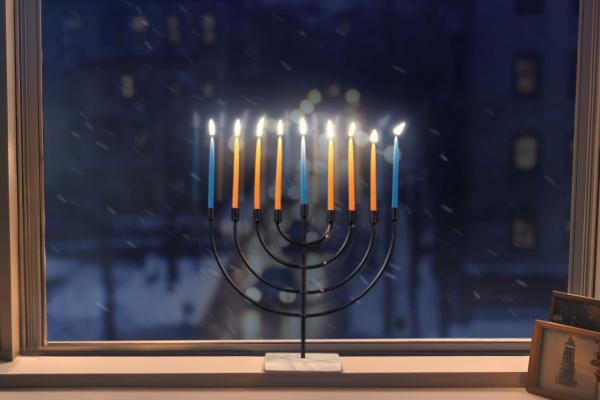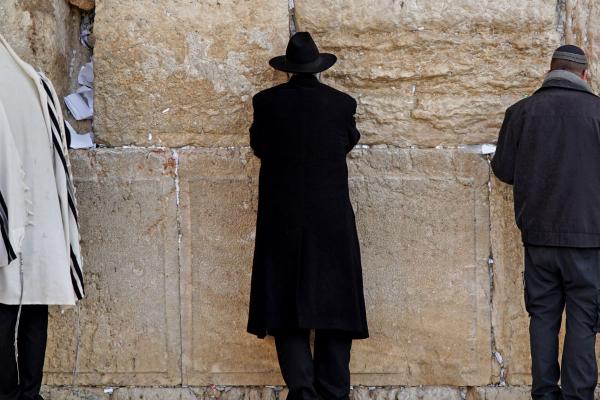The shofar is a simple yet profound instrument of the Bible. It’s a key feature of Judaism’s Fall Feasts, particularly Rosh Hashanah and Yom Teruah.
Yom Teruah and Rosh Hashanah
Yom Teruah means “Day of Blowing” and is also known as the Feast of Trumpets. It is one of the feasts outlined by God in Leviticus 23 and Numbers 29 for Jewish people to observe throughout our generations. Over time, Jewish sages came to believe that God created the world on Yom Teruah. Thus, it became linked with Rosh Hashanah, “the head of the year,” or the Jewish New Year. Today, Rosh Hashanah synagogue services include 100 blasts of the shofar in keeping with the command to blow the shofar on the Feast of Trumpets.
The Shofar
The shofar is one of the earliest trumpets of the Bible. As shofars are made from rams’ horns, they come in various shapes and sizes. The horn is hollowed, and blowing into the small end produces a distinctive loud blast that can be manipulated with one’s breath to create different sounds. Let’s explore the Scriptures for a look at the meanings and uses of the shofar.
Celebration, Worship, and Praise
Along with being blown at observances of the Jewish feasts and new moons (Psalm 81:4), the shofar was used to call Israel to assemblies of worship (Isaiah 27:13 and Joel 2:15). 2 Samuel 6:15 also describes the shofar sounding during the celebration that ensued when David brought the Ark of the Covenant back into the City of David. David danced before the Lord “with all his might” as the people accompanied the ark, shouting and blowing the shofar (2 Samuel 6:12–15 and 1 Chronicles 15:28). The Psalms encourage us to worship and praise the Lord with the sound of the shofar (Psalm 98:6 and 150:3).
Invitation to Come Near to God
At Mount Sinai, God commanded that Israel sanctify themselves for two days. On the third day, He would come to the mountain in the sight of everyone. The people were to stay away from the mountain until they heard the sound of the shofar. Then they could draw near (Exodus 19:13).
A Sign of God’s Presence and Voice
Spectacular sights and sounds accompanied God’s appearance before all Israel at Mount Sinai. There was thunder, lightning, a thick cloud, an earthquake, and “the blast of an exceedingly loud shofar.” Scripture indicates the Lord’s presence is in the sound of the shofar (Exodus 19:16–19 and Psalm 47:5).
A Signal to Military Troops
As God mentioned in Numbers chapter 10, sounding the shofar indicated the commencement of war (Jeremiah 4:19). It was also used to signal troops to attack, halt, or dismiss (2 Samuel 2:28).
The shofar was instrumental in the miracle God performed at the battle of Jericho. The Lord commanded Israel to march around the city on each of the seven days. On the seventh, Joshua gave the command for the shofars to sound and the people to shout, at which time, Jericho’s walls fell down flat; its people were terrified, and Israel won the victory. (See Joshua 6.)
Shofars were also a key component in Gideon’s small army defeating Midian. With lit torches hidden under empty clay pitchers in one hand and a shofar in the other, Gideon’s 300-man army snuck up on Midian in the night. At Gideon’s signal, each man broke his pitcher, exposing the torch’s flame, and blew his shofar. The sudden, loud noise and burst of light so startled the Midianites that the victory was Israel’s. (See Judges 7:16–25.)
A Call to Listen Up
Kings and prophets blew the shofar before making an announcement for the people of Israel. Saul blew the shofar throughout the land, saying, “Let the Hebrews hear,” and Isaiah proclaimed, “when the shofar is blown, listen!” God told Isaiah to use his voice like a shofar to get the people’s attention. (See 1 Samuel 13:3, Isaiah 18:3, and Isaiah 58:1.) During the era of kings, shofar blasts preceded shouts from the masses hailing the coronation of a new king. Absalom used it when attempting to seize his father David’s throne, and David used it when thwarting this rebellion by rushing to crown his son Solomon to succeed him. (See 2 Samuel 15:10 and 1 Kings 1:32–48.)
A Warning Alarm
One of the most recognizable uses of the biblical trumpet is a warning alarm. A watchman on a city wall would scan the horizon and blow a shofar to warn the city of coming danger. Scripture shows the shofar was used to warn of physical dangers, like enemy attacks. Nehemiah chapter 4 describes the dangers that the Jerusalemites faced when rebuilding the city walls. Neighboring people groups threatened to attack and stop the work, so Nehemiah assigned half the men to build and half to hold the weapons, ready to defend when they heard the watchman’s shofar sound. (See Jeremiah 4:5, Nehemiah 4, Ezekiel 33:1–20.)
God commanded the prophets to blow the shofar for spiritual warnings as well. When He sent a prophet to warn of impending judgments, He often called him to blow the shofar (Joel 2:1). Amid a prophecy of the Messiah’s return, Zechariah describes the day when the Lord Himself will blow the shofar (Zechariah 9:14).
In Oath Making
In 2 Chronicles 15:14, the shofar blasts were used to proclaim and seal an oath made to the Lord by the people in Judah under King Asa.
Signal of the Last Days
The shofar also appears in the New Testament regarding the Last Days. Yeshua (Jesus) will return accompanied by a great blast of the shofar. He will come down from Heaven, and at the “last trumpet,” or last shofar, God will raise the dead in Messiah to incorruptible life, “and we will all be changed” (1 Thessalonians 4:16 and 1 Corinthians 15:51-52). At the sound of the shofar, He will gather Believers to Himself for eternity (Matthew 24:30–31).
The Message of the Shofar
Through all of these biblical uses, we see that the shofar is a divine call to action, reflection, and worship. As we hear its blasts during Rosh Hashanah and other sacred moments, we’re reminded of its timeless message: to draw near to God, listen to His voice, and prepare for His ultimate return.











